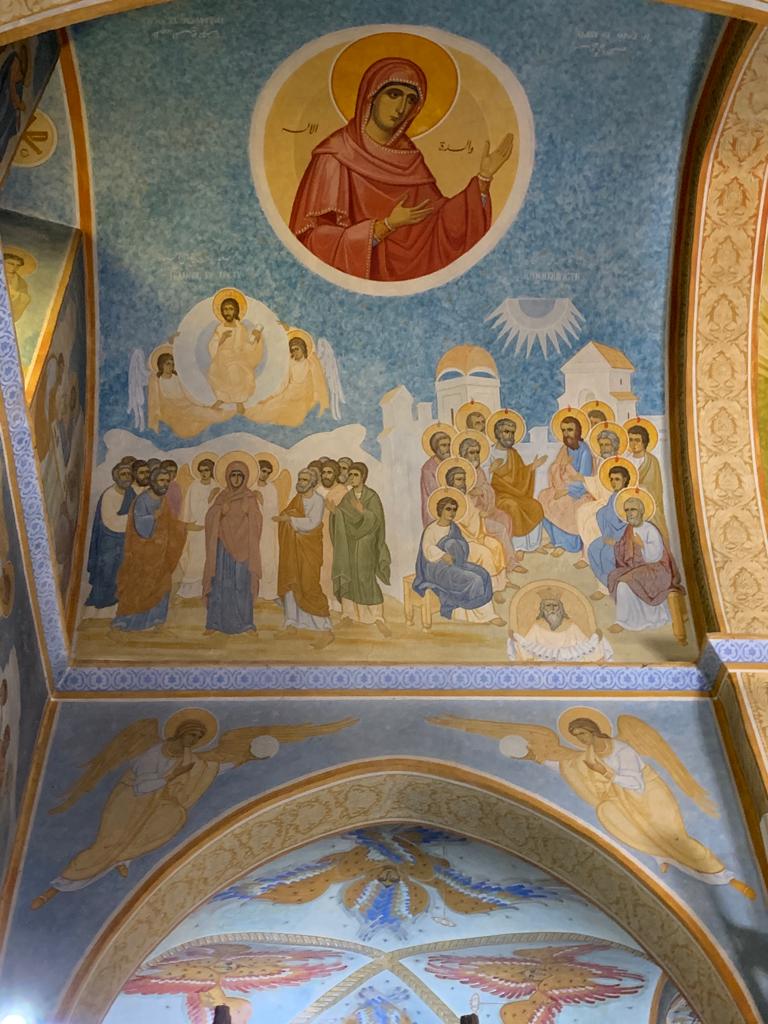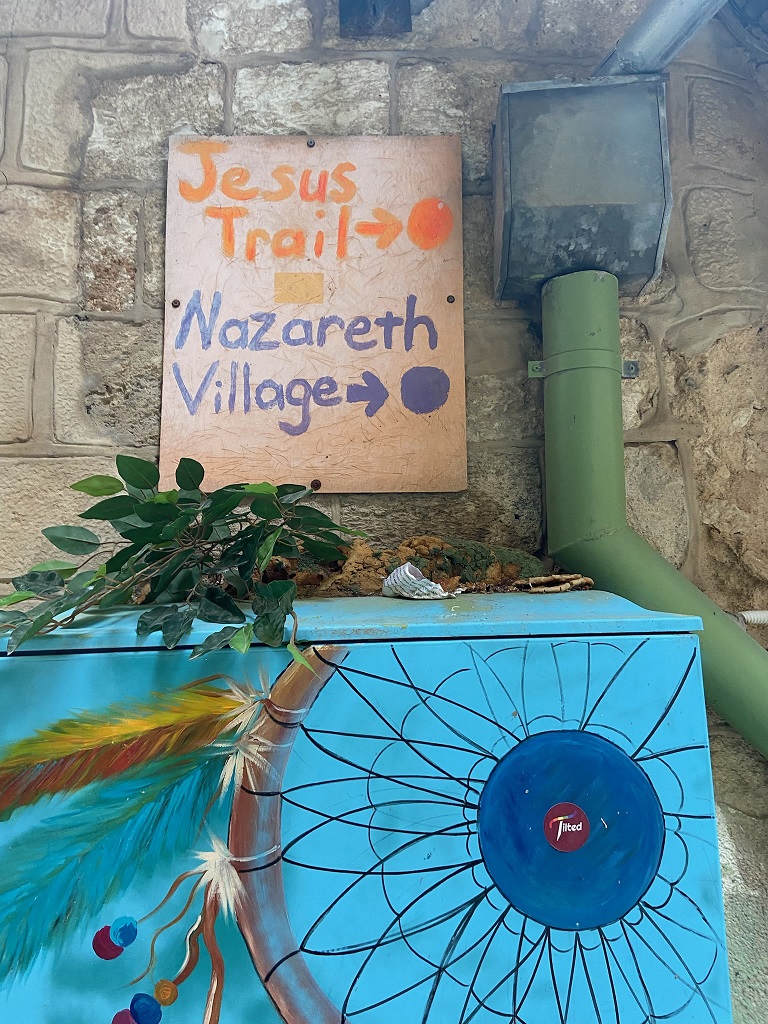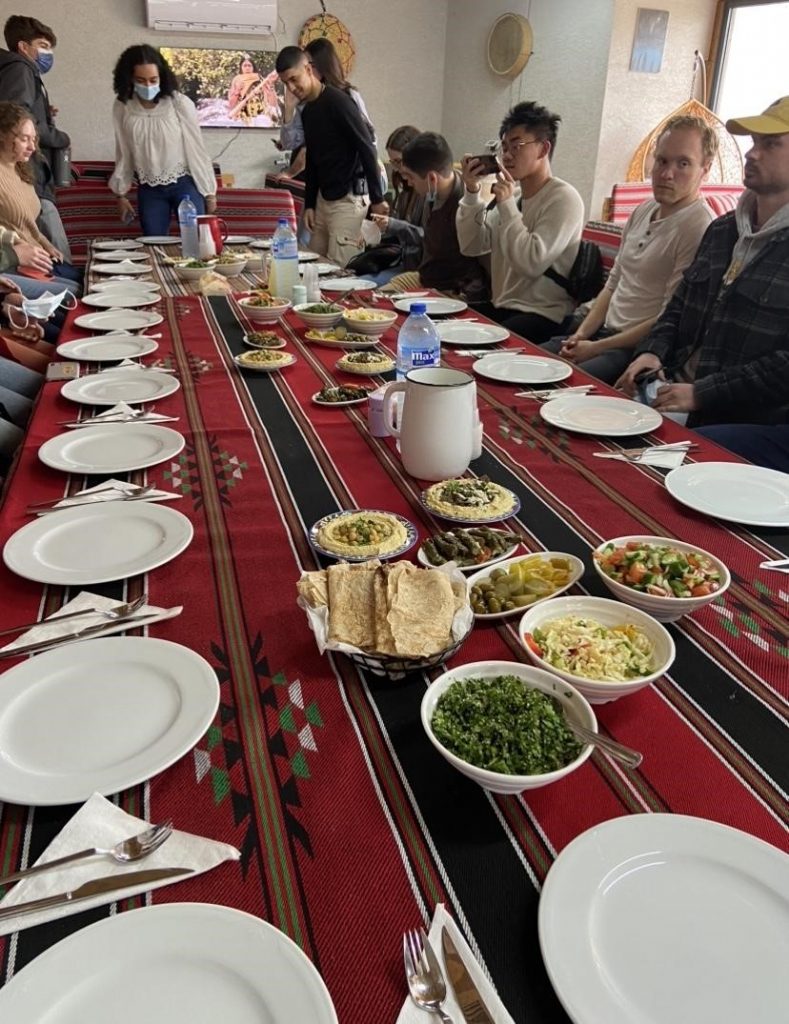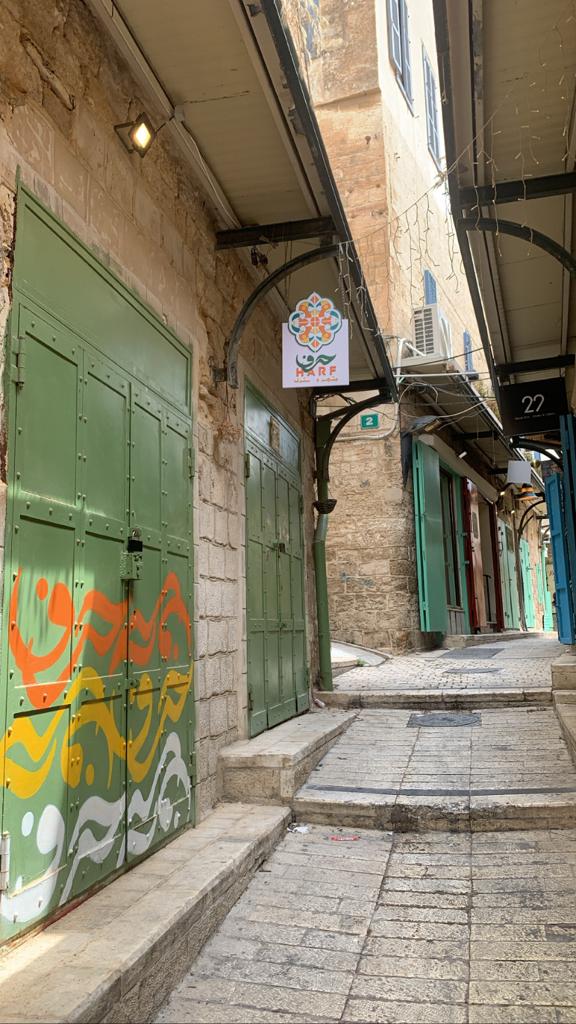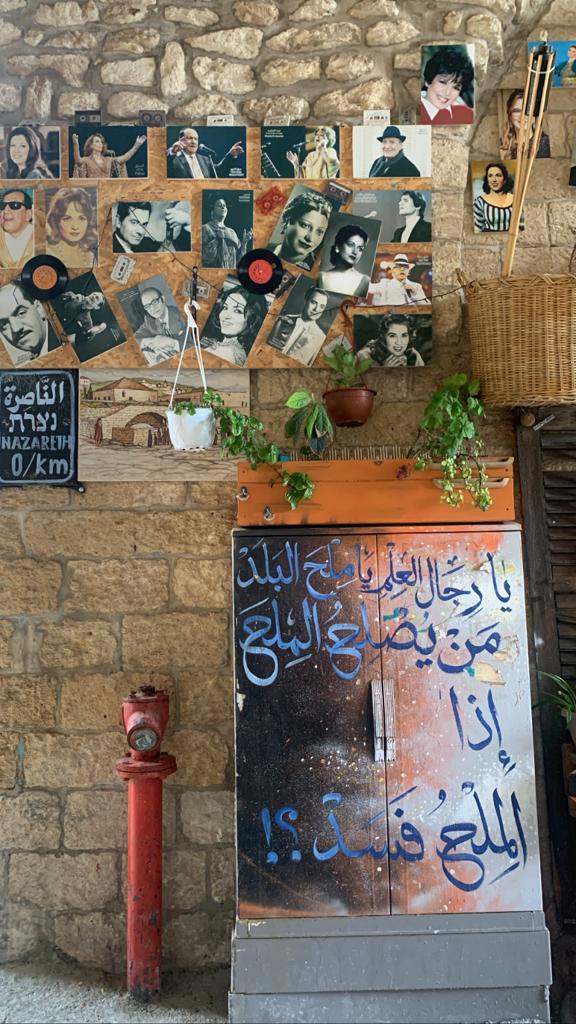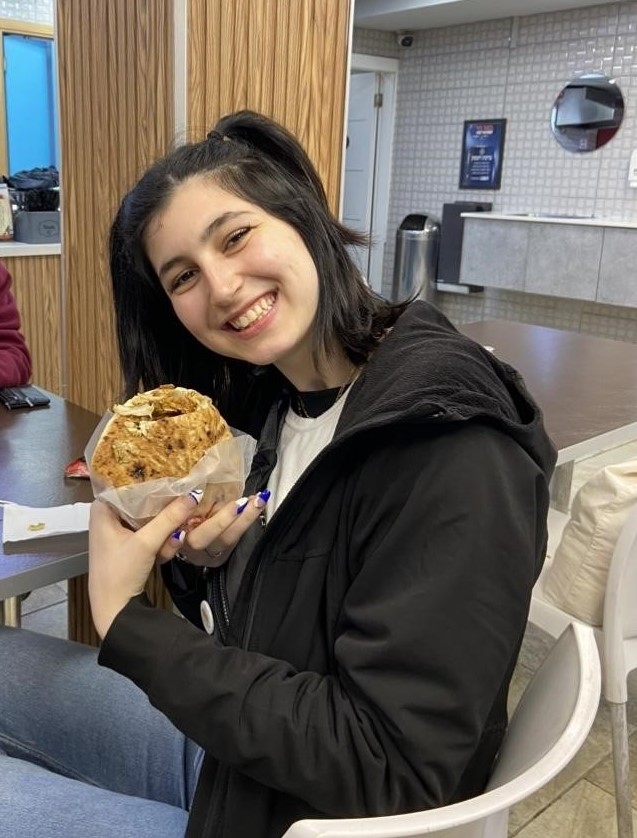
My name is Mary Mulcahey. I am a senior majoring in Advocacy and Social Change, and minoring in French Language and Literature. I’m also learning Arabic this semester. Recently, I was given the opportunity to go to Palestine to finally see the Holy Land, learn more about the region generally, and better understand the Israeli-Palestinian conflict from those who are living through it. Going into this trip as the daughter of a Lebanese immigrant, I decided to wipe my slate clean and be open to learning about the people I was going to encounter and their cultures from their own testimonies.
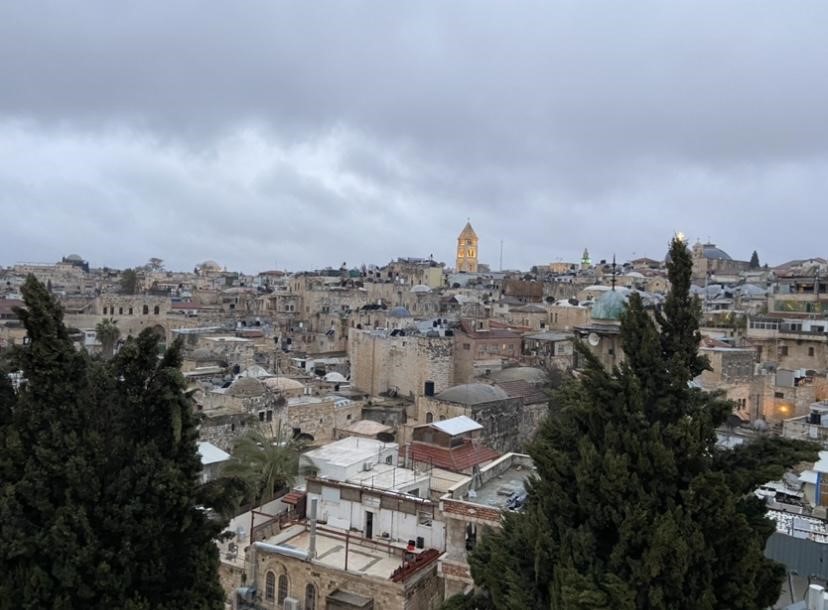
Exploring the various localities of the country was captivating. Everywhere we went, there were influences of hybrid Arab cultures: it could be felt in the food, music, architecture, and language, but it was all just slightly different. I especially noticed this in the shawarma and music. With each city we went to, I tried to find a piece of my Arab identity, to understand and relate to the people there. What really caught my eye was the amount of people who had family from countries like Lebanon, Iran and Iraq. Seeing the continuation of their culture in a new land was astounding.
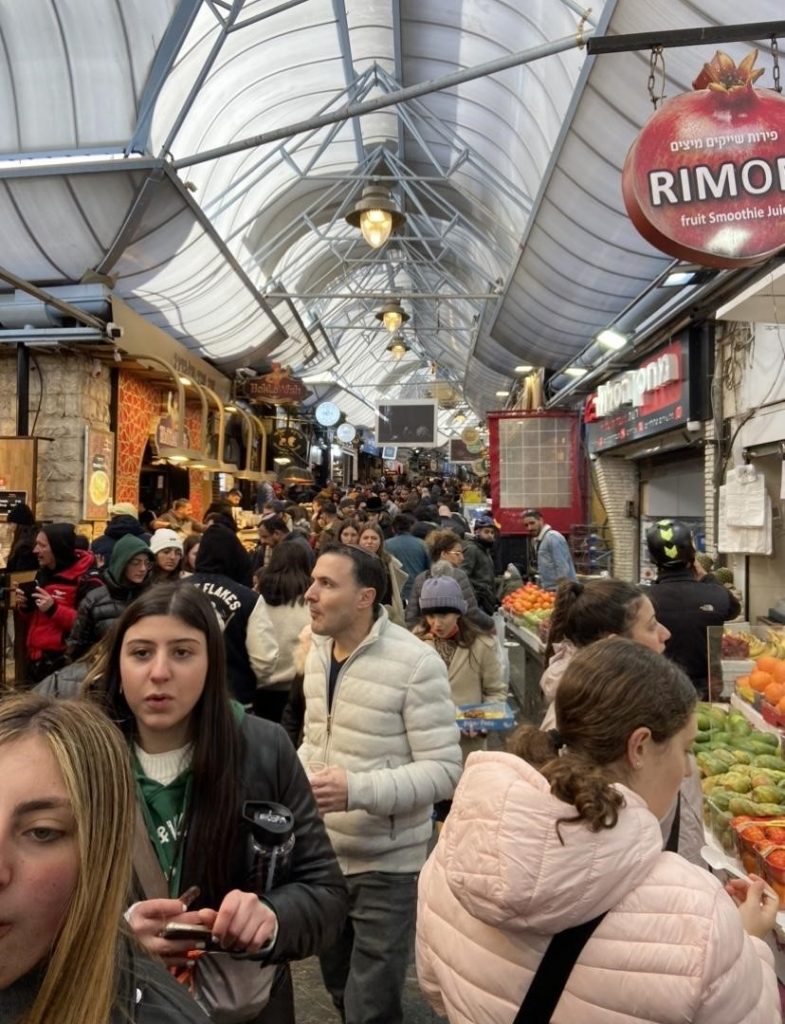
Cities like Tel Aviv had almost no visible Arab cultural impressions, but Nazareth and Jerusalem were filled with rich old Arab traditions. I couldn’t believe it. Nazareth’s food, music and people was probably the most Arab filled city I had visited. It is one of the “christian pilgrimage” destination in the Middle East with several holy sites and rich prophetic history. It is a cultural, religious, and political hub. Not only this, but we stopped to learn about the Druze community and their beliefs and religious practices. We sat down to a lunch prepared by them, and listened to their stories, and learned about their religion and life.
Other Palestinian governed areas were extremely different and yet felt very familiar. Walking around, hearing the language, smelling the falafel on the street, seeing the buildings and street signs , it all felt like I had been there before. It was surreal stepping out of a country and into another and witnessing the stark change in culture . We had gone from hearing and reading Hebrew in the streets, to only hearing and seeing Arabic. Even what people were wearing was completely different. It almost felt like we were on different sides of the Earth.
Being able to see the differences in cultures and life styles just a border away was thought-provoking, but experiencing an Arab culture other than what I’ve been raised in, still felt like home to me. Even if they were not exactly the same, there were still elements that made me nostalgic. I could speak a different Arabic dialect and yet be understood, I could eat food I’ve been raised upon, and I could connect with people who understood my culture.
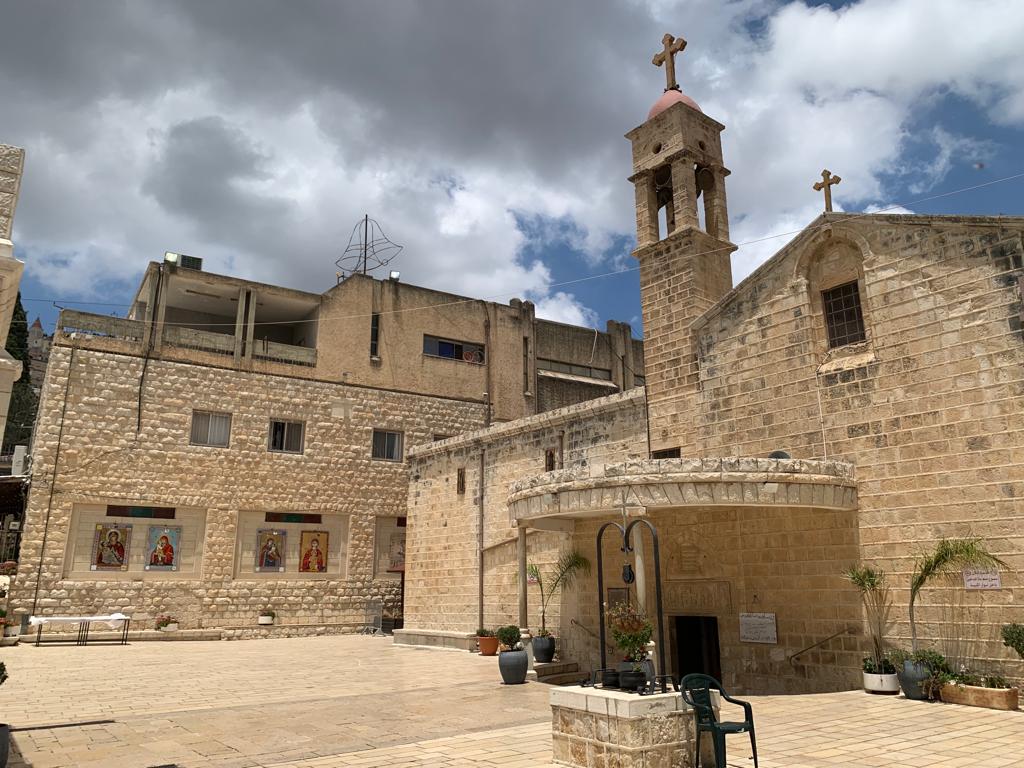
Seeing the beautiful architecture of the mosques in these more Arab cities was so amazing. Mosques hold such important value to many and being able to see them as they are intended to be was an incredible experience. I also had the opportunity to visit the Western Wall which holds importance to the Jewish and Muslim communities, and the Church of the Annunciation and Temple of the Holy Sepulcher which are extremely meaningful to my faith, Christianity! The biggest takeaway from all of this, is that no matter how far you are from your country, you can always find it somewhere. As Mahatma Ghandi once said, “A nation’s culture resides in the hearts and in the soul of its people.”
